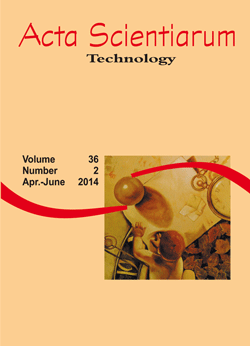<b>Development of soy-based beverages with papaya and mango pulps<b>
DOI:
https://doi.org/10.4025/actascitechnol.v36i2.21958Keywords:
soy extract, fruit pulps pectin, chemical characterization, preference, acceptanceAbstract
The objective of this study was to elaborate and characterize Soy-Based Beverages (SBB) with papaya and mango flavors. Three formulations of each SBB were produced with soy extract (SE); papaya or mango pulp flavor; sugar and citrus pectin, in which were evaluated with chemical and sensory analysis. The addition of the pulps to SE did not affect the results (p < 0.05) of the chemical characterization compared to pure SE. The different proportions of pulp and sugar added to SE interfered only in the values for pH, moisture and total soluble solid. The results of the sensory analysis of preference showed that the most preferred papaya and mango flavors was the formulation containing 62.7% SE, 30% pulp, 7% sugar and 0.3% citrus pectin. The acceptance of the most preferred sample of each flavor represented in the scale used, that the judges 'liked' and / or 'liked a lot' the beverage. It was concluded with the chemical characterization that the addition of pulps to SE did not add nutritional qualities compared to pure SE. With the sensory analyses was possible to put in order the samples, and determine which was the most preferred by judges and quantify the attributes of the chosen sample.
Â
Downloads
Downloads
Additional Files
Published
How to Cite
Issue
Section
License
DECLARATION OF ORIGINALITY AND COPYRIGHTS
I Declare that current article is original and has not been submitted for publication, in part or in whole, to any other national or international journal.
The copyrights belong exclusively to the authors. Published content is licensed under Creative Commons Attribution 4.0 (CC BY 4.0) guidelines, which allows sharing (copy and distribution of the material in any medium or format) and adaptation (remix, transform, and build upon the material) for any purpose, even commercially, under the terms of attribution.
Read this link for further information on how to use CC BY 4.0 properly.















8.png)




